Top 10 AI Agent Frameworks for Building Autonomous Workflows in 2025
Amit Eyal Govrin

AI workflows in 2025 look very different from those just a few years ago as the buzzword has shifted from ‘generative’ to ‘agentic’. This shift shows how AI is evolving from basic task automation to smarter, more independent agents.
Agentic frameworks are now replacing crafted prompts, building autonomous agents that can reason, act, and adapt across tasks without constant human input. These agents are no longer limited to responding to isolated queries. They are now designed to handle complex, multi-step workflows across tools, data sources, and APIs.
This evolution is driven by real needs. Teams want systems that can automate recurring tasks, work across APIs and databases, and handle things without constant prompts.
Take a DevOps use case, for example. Instead of waiting for a developer to react, an agent can detect a failed deployment, roll back the service, update the team, and even open a ticket if needed. That kind of autonomy isn’t just convenient, it saves hours of work and reduces the chance of downtime.
But building something like that isn’t easy. You need more than just a powerful language model. You need an agent framework that supports memory, can maintain state between steps, has reliable error handling, and gives you fine-grained control over how each part of the workflow runs.
And that’s why we’re here today. We’ll explore the 10 best AI agent frameworks 2025. The focus is on real-world use, developer experience, extensibility, and whether these tools are ready for production at scale.
What Defines a Production-Grade AI Agent Framework?
Before reviewing the list of AI agent frameworks, you need to understand what qualifies a framework as production-grade. As AI agents move from prototypes to real-world applications, the demands on their performance increase significantly.
In early stages of a company or startup, simple logic and basic setups can get the job done. However, when agents are expected to work in live environments, interact with APIs, and make decisions that impact users or workflows, the expectations become much higher.
Below are some factors that define a production-grade AI agent framework:
Stateful Execution & Observability
A production-grade framework must allow the agent to maintain context throughout its tasks. It should support retries and provide detailed logs and traces.
For example, an incident response agent needs to keep track of all actions taken during the process and offer the ability to retry any failed steps without losing context. This improves debugging and helps fine-tune performance over time.
Tool & Memory Orchestration
The framework must allow smooth integration with APIs, databases, and memory stores for long-term context. It’s important for agents to access rich, evolving data that gets updated over time.
Tools like Kubiya and LlamaIndex help agents interact with and store data in structured ways, necessary for tasks requiring continuous learning and adaptation.
Security, Permissions, and Isolation
Security is key, especially in enterprise settings such as fintech, finance and cloud infrastructure teams. So, a production-grade AI framework must have role-based access controls and other important security compliances, such as sandboxed execution and audit trails, which are key to ensuring proper security.
Top 10 AI Agent Frameworks
You are well aware of what makes an agentic framework production-grade. Now, we will shift to what frameworks come under these benchmarks. You can review the list of the top AI agent frameworks most suitable for building autonomous workflows in 2025, along with their pros, cons and use cases.
Kubiya.ai
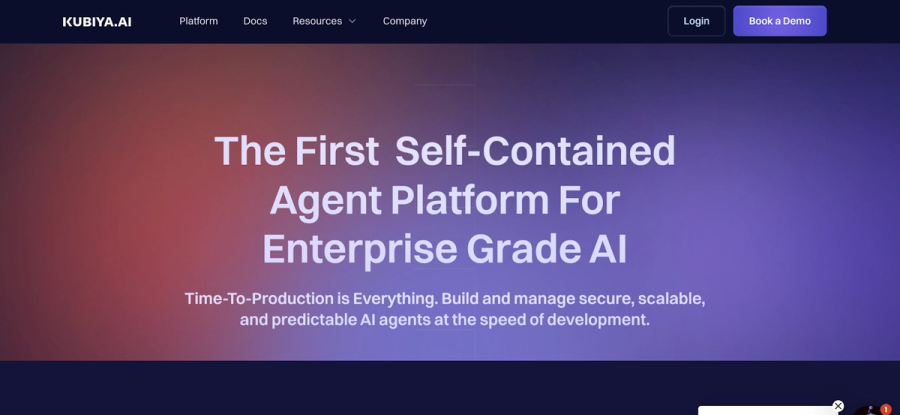
Language: TypeScript, Python
Best For: Automating DevOps workflows and enabling conversational interfaces for developer tools.
When you're managing multiple DevOps workflows across environments, the real blocker isn't the lack of automation tools; it’s the time it takes to configure, maintain, and trust them. That’s why we have put Kubiya.ai first. This framework acts as a conversational automation layer which integrates directly into your existing developer tools.
You don’t need to rip and replace anything. The focus is minimizing time-to-production, getting your automation agents (or, as Kubiya calls them, AI Engineering Teammates) operational in minutes, not days.
Kubiya supports granular role-based access control (RBAC) and full auditability for enterprise teams. So you’re not just automating, you’re doing it in a way that keeps compliance teams off your back.
Use Cases of Kubiya.ai
- Conversational DevOps Automation
Kubiya simplifies DevOps by letting teams trigger workflows using natural language in Slack or Microsoft Teams. You don’t need to remember scripts or commands; just ask, and Kubiya will handle it. - Fast Agent Deployment
With its plug-and-play approach, Kubiya lets you spin up AI agents quickly without overhauling your existing setup. It is ideal for teams that want results instantly. - Secure Workflow Management
Kubiya’s built-in RBAC and audit logging make it perfect for enterprises. You get automation with governance, so security and compliance aren’t afterthoughts. - Cross-Tool Orchestration
Kubiya acts as a bridge between your tools, APIs, and scripts. It helps AI agents perform multi-step tasks across different environments, simplifying operations without the need for manual scripting or custom integrations.
Pros:
- Fast time-to-production: Kubiya agents set up in minutes, cutting the time and effort needed to build workflows.
- Embedded in developer environments: Integrates directly with tools like Slack, CLI, GitHub, JIRA, and others, helping developers to trigger and manage workflows conversationally, without leaving the tools they already use.
- Automation is no longer a high-effort decision: The reduced overhead makes it viable to automate tasks that were previously left manual due to setup costs. This shifts your strategy from prioritizing only high-impact automations to enabling broader coverage.
Cons:
- DevOps-focused scope: Strong in DevOps, but less suited for general-purpose AI workflows.
- Limited extensibility (for now): Still maturing in third-party integrations and custom extensions.
Pricing:
Kubiya.ai offers a pricing model that varies based on usage and enterprise needs, with details available on request. The standard is free, while the enterprise comes with custom pricing.
LangChain
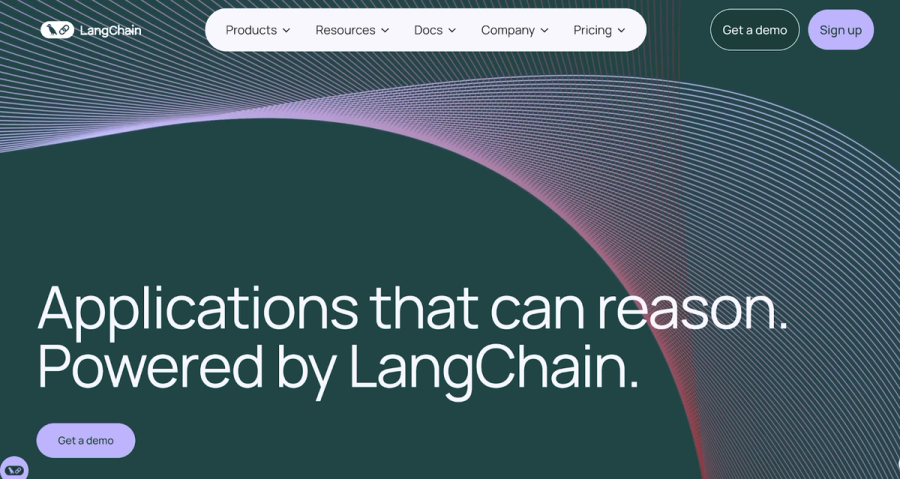
Language: Python, JavaScript (Node.js)
Best For: General-purpose LLM applications with dynamic tools, agents, and memory chaining.
The next on the list of top AI agency frameworks is LangChain. It is one of the most popular open-source frameworks that simplifies application development powered by LLMs (like GPT or other large language models). It is particularly useful when building applications beyond simple text generation, such as creating chatbots, document processing systems, or decision-making agents.
Example Use Case
LanChain has several use cases. Let’s discuss one: building an AI tool to help legal teams process and extract key information from thousands of legal documents. LangChain can integrate a large language model with document databases or cloud storage systems.
For example, when a legal professional uploads a contract, LangChain can search through the document, pull out relevant clauses (like indemnity or confidentiality clauses), and compare them to previously processed documents to highlight differences or risks. It can also cross-reference this data with external legal resources, offering suggestions or summarizing key points for quicker decision-making.
Pros:
- Extensive ecosystem with built-in integrations.
- Easy setup with vector DBs and LLMs like OpenAI.
- Flexible and modular design for custom workflows.
Cons:
- Performance may drop in high-load scenarios.
- Debugging complex chains can be challenging.
Pricing:
Open-source; third-party integrations may involve additional costs.
LangGraph
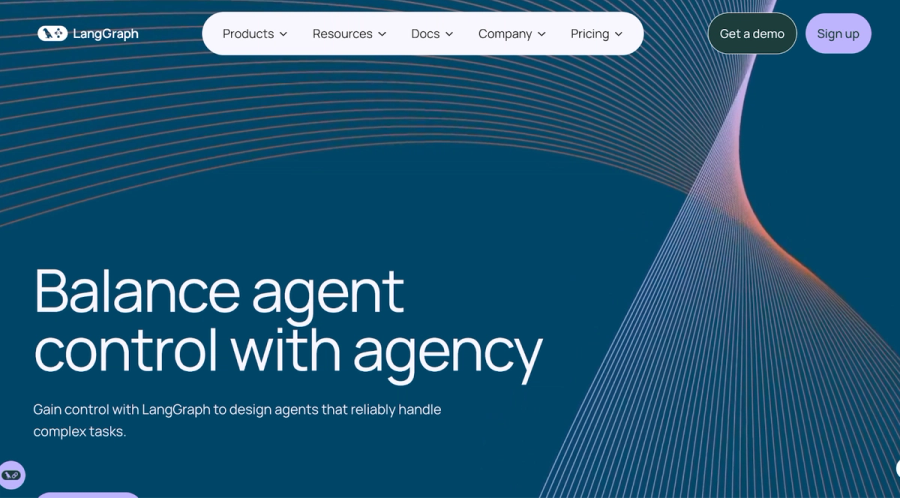
Language: Python
Best For: Multi-agent workflows, control flows with loops, state machines.
LangGraph also extends the capabilities of large language models (LLMs) like LangChain, except by integrating them into graph-based structures. It’s designed for building and managing multi-agent workflows.
LanGraph is a good option if you’re looking to create custom workflows such as loops and state machines. Moreover, it can integrate with existing knowledge graphs to provide context-aware responses, enabling smarter decision-making based on structured information.
Example Use Case
Let’s say you're building a customer support chatbot for a telecom company. It will access information such as network outages, customer accounts and service records from a knowledge graph.
A chatbot will access precise information about outages by asking the customer about their specific account, so it can provide personalised solutions when a customer asks about an outage. The support experience becomes quicker and delivers greater assistance because of such integrations.
Pros:
- Stateful execution with retries, checkpoints, and conditional control.
- Easy integration with LangChain Agents.
- Transparent debugging with graph-based flow visualization.
Cons:
- Requires familiarity with LangChain internals.
Limited to LangChain-compatible components.
Pricing:
Open-source; additional costs may apply for extended integrations
CrewAI
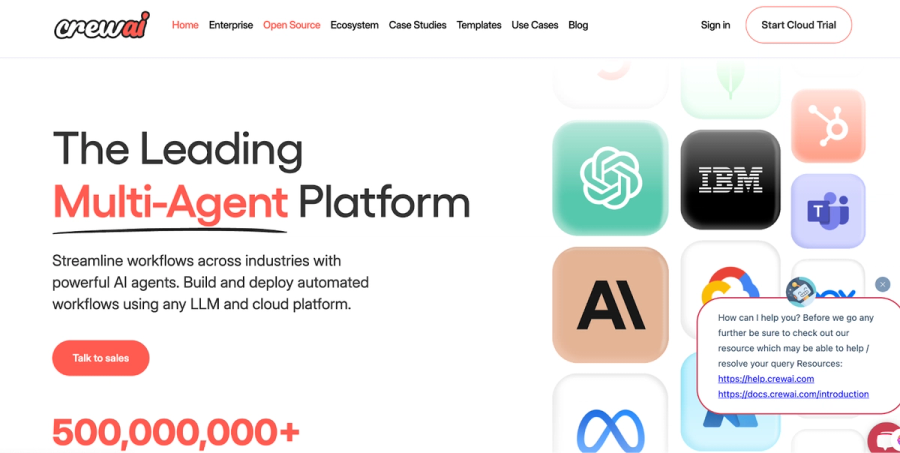
Language: Python
Best For: Multi-agent coordination with distinct roles and memory isolation.
CrewAI is a Python-based orchestration framework designed for managing multi-agent systems, where each agent has distinct roles and memory isolation. The system serves two functions: it helps agents coordinate with each other while also allowing behavior control through assigned personas for handling complex tasks.
The framework allows for building AI ‘teams’ which solve problems faster than independent agents, thus making it suitable across multiple application domains.
Example Use Case
CrewAI can be used for a customer support system with multiple AI agents who specialize in different sectors of customer interactions. CrewAI enables three distinct roles for agents: one takes first customer inquiries, another tackles technical problems, and a third resolves account or billing issues.
Each agent has its own memory, ensuring secure, focused customer data handling. For example, the billing agent handles payment questions, while the tech support agent addresses product issues, keeping interactions smooth and personalized.
Pros:
- Supports agent role assignment and collaboration.
- Memory scoping for persona-driven behavior.
- Lightweight and composable architecture.
Cons:
- Basic execution control features.
- No native tool integration or plugin ecosystem.
Pricing:
Open-source with optional support and extended features available at additional cost.
Microsoft AutoGen
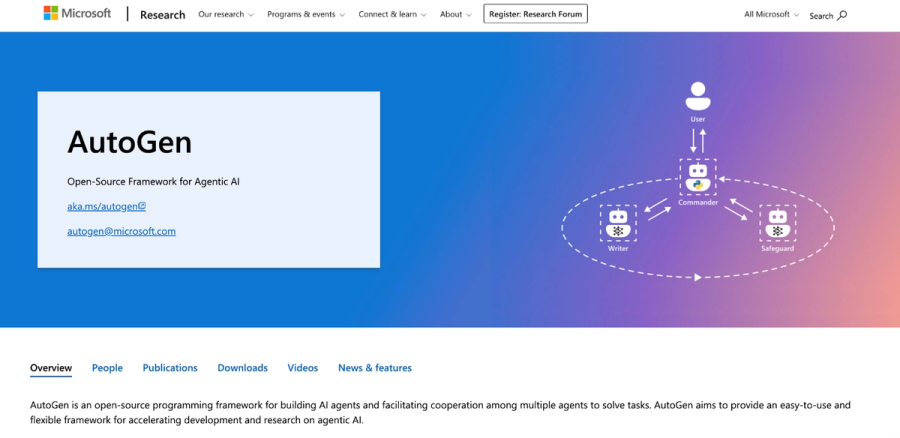
Language: Python
Best For: Autonomous agents communicating via function-calling messages.
Built on AgentChat, Microsoft AutoGen is a web-based UI that helps autonomous agents communicate through function-calling messages. It suits complex, multi-agent conversations and dynamic tool usage within enterprise workflows.
Example Use Case
With Microsoft AutoGen, a team working on a complex API can automate the generation of detailed documentation directly from the code. AutoGen analyzes the codebase as developers update endpoints and generates clear, consistent API documentation, including parameter descriptions, response formats, and examples.
This helps developers save time by eliminating the need to manually write documentation for each update, ensuring the docs are always up-to-date with the latest code changes.
Pros:
- Implements the LLM-as-Function paradigm.
- Supports advanced multi-agent conversations and tool integration.
- Agent-chat loop abstraction with middleware hooks.
Cons:
- Requires careful termination logic design to avoid infinite loops.
- Strong dependency on Azure/OpenAI stack.
Pricing:
Available under the Azure pricing model, typically based on consumption and usage.
Microsoft Semantic Kernel
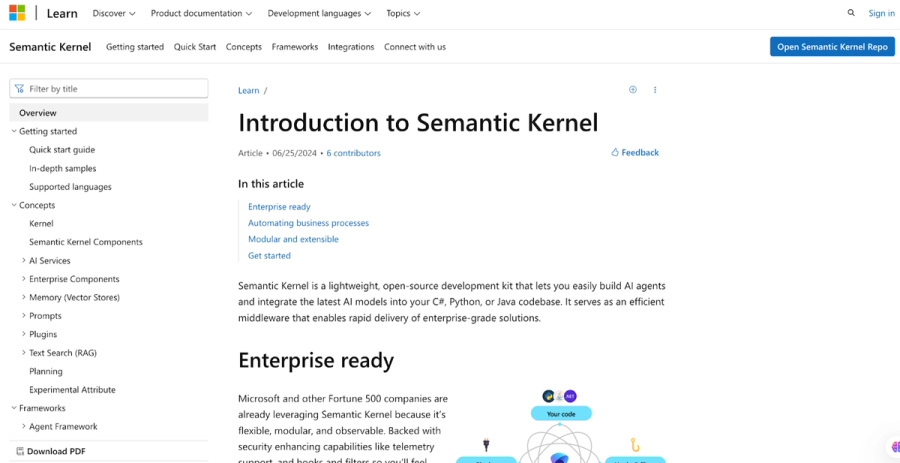
Language: C#, Python
Best For: Embedding AI skills in existing enterprise software.
Microsoft Semantic Kernel is a framework designed to embed AI skills into enterprise software. It supports a skill-based plugin system and tight integration with Microsoft 365 and Azure, making it ideal for enterprise environments.
Example Use Case
Say you're getting hundreds of customer messages every week, some about bugs, others with suggestions, and a few just venting. With Semantic Kernel, you can build a system that understands what people are saying, not just scans for keywords.
For example, when someone writes "the app freezes every time I try to upload a file," the system knows it’s a bug related to performance, not just a generic complaint. It tags it, routes it to the right team, and can even summarize the issue.
You stop spending hours manually sorting feedback and start spotting patterns that help your product team act faster.
Pros:
- Skill-based plug-in system with planner APIs.
- Seamless integration with Microsoft 365 and Azure.
- Easily embeddable in .NET systems.
Cons:
- Higher learning curve for non-.NET developers.
- Limited community contributions outside Microsoft.
Pricing:
Available through an Azure subscription, with pricing based on usage and scale.
LlamaIndex (formerly GPT Index)
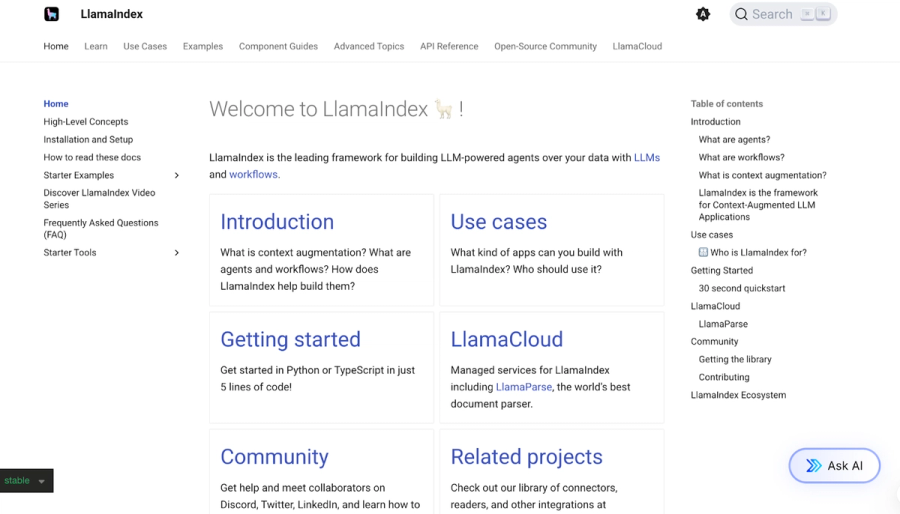
Language: Python
Best For: Retrieval-augmented generation (RAG) and agent-based querying of private data.
LlamaIndex is a Python-based framework focused on retrieval-augmented generation (RAG) and agent-based querying of private data. It is especially effective for advanced AI application indexing, routing, and querying tasks.
Example Use Case
Engineering teams often rely on docs scattered across tools like GitHub, Notion, and internal wikis. Over time, this knowledge becomes hard to track and reuse.
With LlamaIndex, we set up a system that connects all our unstructured sources and feeds them into a retrieval-augmented app that answers questions with real context.
When someone asks, “How did we handle auth migration last quarter?”, the assistant pulls the relevant RFCs, PRs, and meeting notes, no need to dig through folders or ping five people. It became the go-to internal tool for ramping up new devs and keeping tribal knowledge alive.
Pros:
- Advanced RAG + routing agents with indexing and querying abstraction.
- Seamlessly integrates with LangChain, OpenAI, and vector DBs.
Cons:
- Not a full agent orchestration system.
- Requires additional code for complex workflows.
Pricing:
Available with flexible pricing, typically based on usage and scale.
SmolAgents
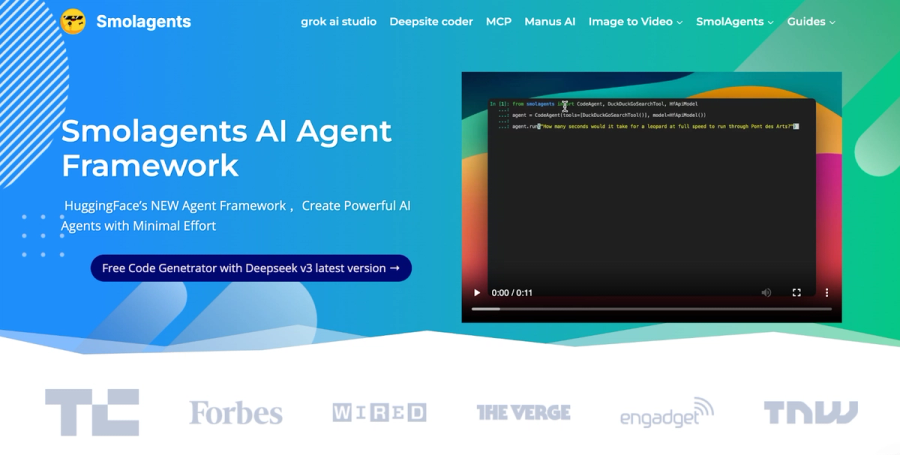
Language: Python
Best For: Running simple AI agents locally without heavy frameworks.
SmolAgents is a minimalist Python framework designed to run simple AI agents locally without relying on heavy frameworks. It is ideal for educational purposes, debugging, or light personal projects.
Example Use Case
During side projects or hackathons, dev folders often become a dumping ground for logs, temp files, and outdated scripts. With SmolAgents, you can build a lightweight agent that runs locally and scans for unused files based on custom rules, like last modified time or file patterns and prompts you before deleting them. It’s a good option when you don’t need a full-blown orchestration setup, just a quick, local utility that saves time.
Pros:
- Extremely lightweight (<200 LOC), hackable, and zero-dependency.
- Great for debugging or educational use.
Cons:
- Not suitable for production-grade workflows.
- Lacks tooling, logging, memory, or agent lifecycle control.
Pricing:
Free and open-source, with no associated costs.
OpenAI Agents SDK (aka Swarm)
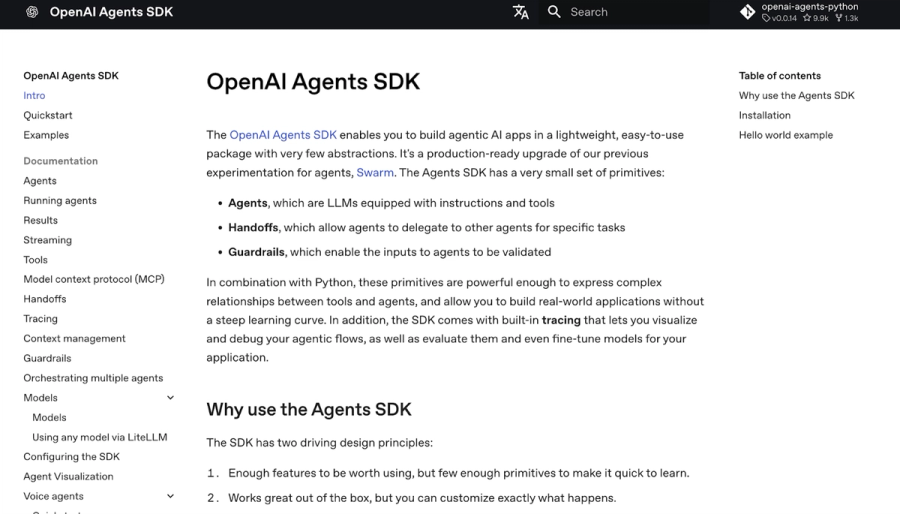
Language: Python (early-stage SDK)
Best For: Building agent swarms with fine-grained OpenAI integration.
The OpenAI Agents SDK, also known as Swarm, is an early-stage Python SDK designed for building agent swarms with deep integration into OpenAI’s APIs. It's best suited for applications requiring advanced, collaborative agent behaviors.
Pros:
- Direct access to OpenAI-native function-calling APIs.
- High-level abstractions for planning, delegation, and memory.
Cons:
- Closed ecosystem.
- Limited visibility/documentation as of early 2025.
Pricing:
Pricing details available through OpenAI’s developer portal, subject to usage and scale.
SuperAGI
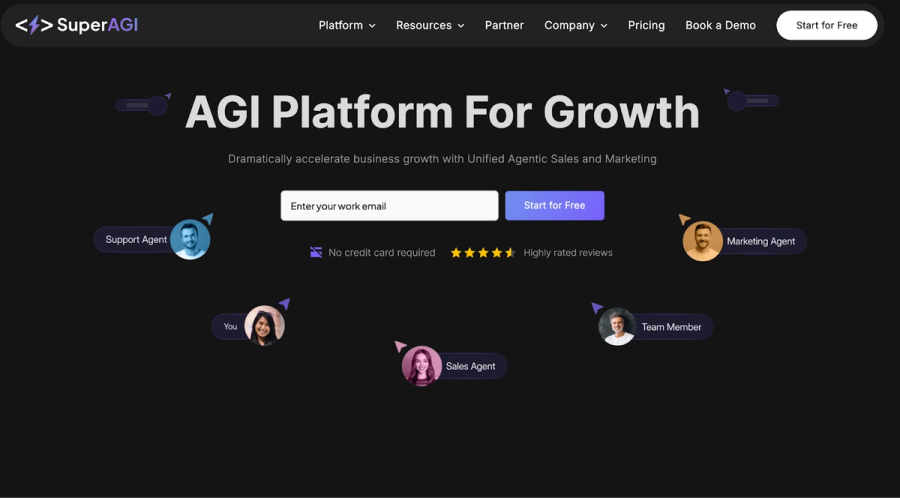
Language: Python
Best For: Production-scale autonomous agents with built-in UI, vector store, and toolchain orchestration.
SuperAGI is a Python-based framework designed for building production-scale autonomous agents. It includes a built-in web UI, vector store, and tool orchestration, making it ideal for enterprise-level applications.
Pros:
- Web UI for agent orchestration.
- Extensible tool registry.
- Supports ReAct and GPT-based planning.
Cons:
- Heavyweight setup, not ideal for lightweight pipelines.
- Still maturing around enterprise-grade observability.
Pricing:
Available on a credit basis: for $100 /pack /month, you get 10000 Credits/month.
Choosing the Right AI Agent Development Framework
By now, you’ve probably seen a variety of AI agent frameworks, each with its strengths and use cases. But choosing the right one for your team can be tricky. The decision depends on your specific needs, whether you're looking to streamline workflows, integrate with existing tools, or ensure tight security across internal operations.
When we do an AI agent frameworks comparison, it can be seen that no single tool fits all scenarios. Still, being the first self-contained agent platform, Kubiya manages every dependency and every layer. Let’s look at what to consider when selecting the right AI agent framework for your situation:
Developer-Centric AgentOps: Kubiya
Kubiya is designed to automate internal workflows like DevOps, CI/CD, and incident resolution, making it ideal for developer-centric environments. It reduces workflow automation's overhead while providing robust, enterprise-grade controls.
Chat-Native Interface + RBAC
With Kubiya, teams can leverage a chat-native interface through platforms like Slack or Teams, enabling smooth human-agent collaboration. It's built-in role-based access control (RBAC) ensures that only authorised users can interact with sensitive workflows, while the system maintains full auditability for compliance and security.
Best For:
Kubiya is perfect for teams looking to automate secure internal operations with minimal setup while benefiting from SOC2-compliant infrastructure to maintain high security standards across all processes.
Conclusion
AI agent frameworks are changing how we manage tasks and workflows in 2025. They’ve evolved from simple prompts to complex, multi-step processes, making workflows more efficient and less reliant on manual input. These frameworks are now key for businesses wanting to automate tasks and speed up operations.
The right framework for you will depend on your needs: speed, security, or ease of integration. Kubiya.ai offers a quick, developer-friendly setup, while tools like LangChain and Microsoft AutoGen are better for more specialized tasks.
Ultimately, choosing the best tool comes down to your specific use case and how much customization you need. Building smarter, more autonomous workflows is easier with these tools.
FAQs
Which framework is best for building AI agents?
Kubiya.ai is an excellent choice for building AI agents due to its user-friendly interface and robust features. It simplifies creating intelligent agents, making it an ideal option for those seeking efficiency and ease of use. While other frameworks like LangChain offer greater customization, Kubiya.ai delivers powerful results without complexity.
What is the AI agent trend in 2025?
In 2025, AI agents are set to become even more autonomous, taking over complex tasks and decision-making processes with minimal human input. Platforms like Kubiya.ai will lead the charge by offering seamless AI solutions that can adapt to various industries, making operations smoother and more efficient.
What is the best AI agent platform?
Kubiya.ai is the go-to platform for those seeking simplicity, reliability, and powerful AI agents. While alternatives like LangChain or Microsoft AutoGen offer greater customization, Kubiya.ai’s intuitive design and versatile features make it a standout choice for many users.
About the author

Amit Eyal Govrin
Amit oversaw strategic DevOps partnerships at AWS as he repeatedly encountered industry leading DevOps companies struggling with similar pain-points: the Self-Service developer platforms they have created are only as effective as their end user experience. In other words, self-service is not a given.
